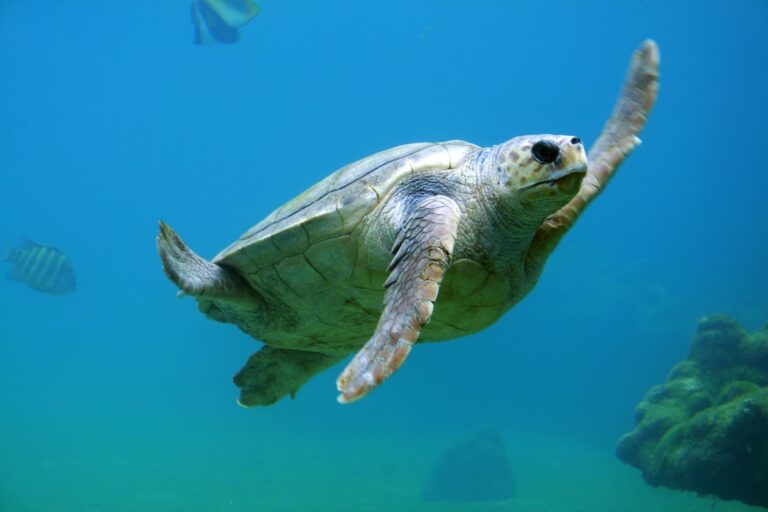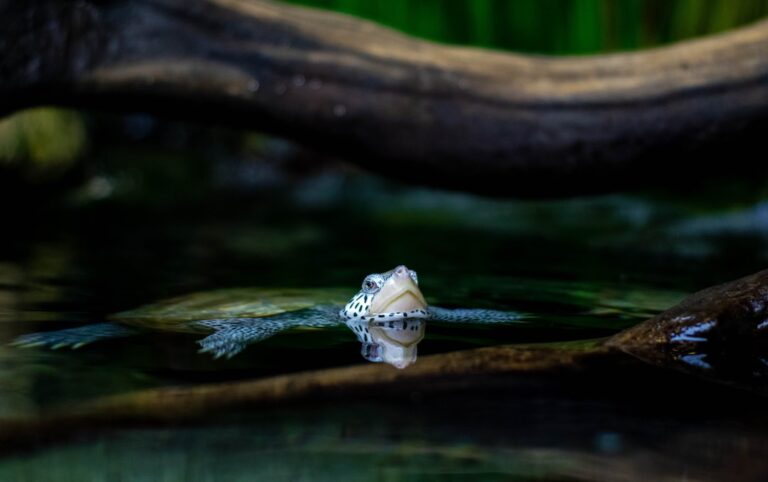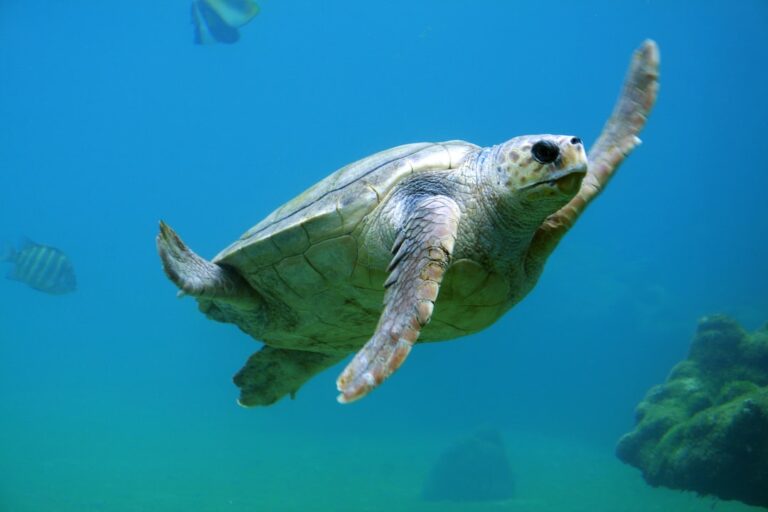Are Turtles Playful?
Turtles are fascinating creatures that have been around for millions of years. They are known for their unique characteristics, such as their hard shells and slow movements. Turtles can be found in various habitats, including oceans, rivers, and even in people’s homes as pets. Understanding turtle behavior is important for pet owners because it allows them to provide the best care and create a stimulating environment for their turtles.
Turtles are known for their slow and deliberate movements, but they also exhibit a range of behaviors that can be quite playful. By understanding these behaviors, pet owners can better understand their turtles’ needs and provide them with a fulfilling and enriching environment.
Table of Contents
Understanding Turtle Playfulness
Playfulness in turtles refers to their engagement in activities that are not directly related to survival or reproduction. It is a way for turtles to explore their environment, interact with other turtles or objects, and express their natural instincts. Playfulness is an important aspect of a turtle’s life as it provides mental stimulation, exercise, and social interaction.
Turtles engage in playful behaviors for various reasons. One reason is to explore their surroundings and learn about their environment. By engaging in playful behaviors such as swimming or basking, turtles can familiarize themselves with their surroundings and gain a better understanding of their habitat.
Types of Playful Behaviors Exhibited by Turtles
Turtles exhibit a variety of playful behaviors that can be both entertaining and educational to observe. Some common playful behaviors include basking, swimming, and exploring.
Basking is when turtles spend time out of the water, usually on rocks or logs, to soak up the sun’s warmth. This behavior not only helps regulate their body temperature but also provides an opportunity for them to relax and enjoy the surroundings.
Swimming is another playful behavior commonly exhibited by turtles. They use their flippers to glide through the water, sometimes playfully chasing after each other or objects in the water. Swimming not only provides exercise for turtles but also allows them to explore their aquatic environment.
Exploring is a natural behavior for turtles, and it can be quite entertaining to watch. Turtles may use their strong legs and claws to climb over rocks or explore their surroundings. They may also dig in the substrate or push objects around with their noses. This behavior allows turtles to satisfy their natural curiosity and engage in mental stimulation.
Turtles can also play with objects and other turtles. They may push objects around with their noses or use their flippers to interact with toys. Turtles may also engage in social play with other turtles, such as chasing each other or nipping at each other’s tails. These playful interactions provide socialization and mental stimulation for turtles.
Factors That Influence Turtle Playfulness
Several factors can influence a turtle’s playfulness, including environmental factors, age, and species.
Environmental factors such as temperature and lighting can have a significant impact on a turtle’s playfulness. Turtles are ectothermic animals, which means they rely on external sources of heat to regulate their body temperature. If the temperature in their environment is too cold or too hot, it can affect their activity levels and overall playfulness. Similarly, lighting plays a crucial role in a turtle’s behavior as it affects their circadian rhythm and overall well-being.
Age and species also play a role in a turtle’s playfulness. Younger turtles tend to be more active and playful compared to older turtles. As turtles age, they may become less active and spend more time resting or basking. Additionally, different turtle species have different temperaments and activity levels. Some species are naturally more playful and active, while others are more docile and prefer to spend their time basking or resting.
How to Encourage Playfulness in Pet Turtles
As a pet owner, there are several ways you can encourage playfulness in your turtle and create a stimulating environment for them.
First, it is important to provide a suitable habitat for your turtle. This includes providing a spacious tank or enclosure with appropriate temperature and lighting. Turtles need both a basking area and a swimming area to meet their physical and behavioral needs. The basking area should have a heat lamp or UVB light to provide warmth and simulate natural sunlight.
Second, you can provide toys and activities that encourage playfulness. Turtles enjoy objects they can push around or interact with, such as floating toys or objects that sink to the bottom of the tank. You can also create an obstacle course using rocks or logs for your turtle to climb over or explore.
Additionally, you can introduce other turtles into the tank to provide social interaction and play opportunities. However, it is important to research the compatibility of different turtle species before introducing them to ensure they will get along.
Tips for Interacting with Playful Turtles
Interacting with playful turtles can be a fun and rewarding experience, but it is important to do so safely and respectfully.
First, always wash your hands before and after handling your turtle to prevent the spread of bacteria. Turtles can carry salmonella, which can be harmful to humans.
When interacting with your turtle, it is important to read their body language to determine their mood. If a turtle is hiding in its shell or trying to swim away from you, it may not be in the mood for interaction. On the other hand, if a turtle is actively swimming around or approaching you, it may be more receptive to interaction.
Avoid handling your turtle too frequently or for extended periods of time, as this can cause stress and discomfort. Instead, provide opportunities for your turtle to explore its environment and engage in natural behaviors.
Common Misconceptions About Turtle Playfulness
There are several misconceptions about turtles being boring or unresponsive pets. However, turtles can be just as playful and engaging as other pets if provided with the right environment and stimulation.
Turtles may not be as active or interactive as dogs or cats, but they have their own unique ways of expressing playfulness. By observing their behaviors and providing opportunities for play, pet owners can witness the playful side of turtles.
The Importance of Play for Turtles’ Physical and Mental Health
Play is not only enjoyable for turtles but also important for their physical and mental health.
Engaging in play helps turtles maintain muscle tone and improve circulation. Activities such as swimming and exploring provide exercise and help keep turtles physically fit. Play also stimulates their minds and prevents boredom, which can lead to stress and other health issues.
Playfulness also helps reduce stress in turtles. By providing a stimulating environment and opportunities for play, pet owners can help alleviate stress and promote overall well-being in their turtles.
Signs That Your Turtle is Happy and Playful
There are several behaviors that indicate a turtle is happy and playful. Active swimming is a good sign that a turtle is feeling energetic and engaged. Turtles may also explore their environment, climb over rocks or logs, or push objects around with their noses.
A happy and playful turtle will have a healthy appetite and show interest in its surroundings. It will also have bright eyes, a smooth shell, and exhibit normal behavior patterns.
On the other hand, signs of stress or illness in turtles include lethargy, loss of appetite, shell abnormalities, or changes in behavior. If you notice any of these signs, it is important to consult a veterinarian who specializes in reptiles.
The Joy of Having Playful Turtles as Pets
Having a playful turtle as a pet can bring joy and entertainment to your life. By understanding turtle behavior and providing a stimulating environment, you can create a fulfilling life for your pet turtle.
Turtles are not just slow-moving creatures; they have their own unique ways of expressing playfulness and engaging with their environment. By observing their behaviors, providing toys and activities, and interacting with them safely, you can unlock the playful side of turtles and enjoy the benefits of having a playful and engaging pet.
If you’re curious about the playful nature of turtles, you might also be interested in learning about why turtles bite themselves. It’s a fascinating behavior that has puzzled reptile enthusiasts for years. To find out more about this intriguing topic, check out this article on Reptile Friend.







